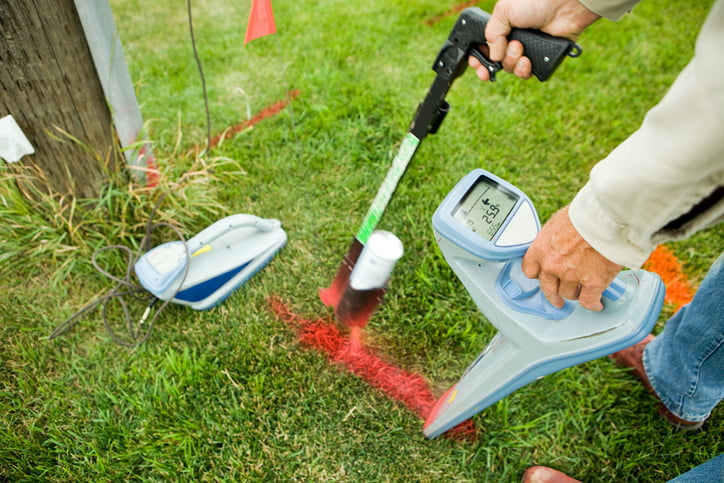Nothing can delay your job faster than breaking ground only to find out there are a couple of underground cables lying around that you didn’t account for. Not only is that a nuisance, but it can be a dangerous situation that can lead to expensive mistakes. Luckily, there are underground cable locator products that prevent this from becoming a problem. Cable locators are capable of detecting a number of utilities depending on their specific application, including pipes. Knowing how locators operate and using them effectively can prevent injury and expensive costs from damaged utilities.
An underground cable locator can detect underground utilities like fibre optic cables, telephone lines, power cable utility lines, gas pipelines, water pipes, sewer lines, electrical wires, etc. All of these utilities are generally buried deep underground and aren’t always visible. When digging up around your driveway or lawn, a cable locator should be used first, in order to find the location of underground utilities before you start digging.
Cable locators take advantage of electromagnetic fields to determine the depth and direction of buried utilities. It uses a wide range of technologies for output, though, such as displays, meters and sound indicators. The cable’ course must be somewhat known before you try to locate a problem underground. If you don’t know its location, how can you find the fault? While there are maps of underground utilities, you might need to find them yourself.
What are Cable Locators?

Cable locators are specialised tools used to detect underground utilities. These units are used to prevent damage and injuries that can result when underground utilities are struck during excavation. Property managers, homeowners and utility services can benefit from cable locators, as many older residential and commercial buildings have active underground utilities to keep in mind when beginning a new project.
An underground cable locator consists of two parts – a transmitter and a receiver. The transmitter sends out a signal into the ground, which as it travels, encounters the electrical current flowing along the path of the utility. The current creates an alternating magnetic field around the cable, which then the receiver detects.
These pieces of equipment can detect any pipe or cable underground if there’s current passing through them. Some of the best locators can even energise the targets with multiple signals. Lower frequencies provide a better depth of detection, whereas higher frequencies can detect faults in the line. Choosing the right frequency is the most important factor in detecting the target. Many models come with a standard operating frequency of 50/60Hz.
Underground utility detectors are a unique tool and perform a specialised job. While we all want a system that can do it all, there are different types of locators for various jobs. For instance, magnetic locators that are meant for detecting steel and iron pipes, are ineffective at tracing cables. That being said, many advanced models can be used to energise steel and iron targets and find them.
Detection Principles

There are two types of detection principles that locators are categorised by – passive and active. With passive detectors, the locator is using the utility’s own current to find its electromagnetic field. Active locators, on the other hand, feature their own power source to energise the targeted utility. After that, a specific frequency of the signal is sent through the line that the locator then traces.
When comparing passive and active locators, know that passive locators provide a huge benefit if the utility has current already. On the downside, if the utility is current-less, the locator is useless. Worth mentioning is that the passive locator can’t tell apart multiple targets in close proximity that are energised.
Active locators, on the other hand, feature their own signal frequency, so extraneous targets aren’t a problem. These are best used in applications with multiple targets on the ground where accuracy is crucial.
When using metal detectors, though, the transmitter will emit a radio frequency that penetrates the earth. That signal then interacts with the currents going along the buried utility. The interaction will result in a magnetic field around the cable that is then detected by the receiver. The strength of the magnetic field decreases with depth. The receiver can measure the amplitude of the magnetic field and determine the distance to the cable based on the decay rate of the magnetic field.
Types of Locators
Locators can be either handheld, vehicle-mounted or pole-mounted. Handheld units are the most popular, and they work by measuring the time of the signal through a wire. Vehicle-mounted locators, on the other hand, don’t use a wire, but rather are the transmission medium. The cable is placed inside a coil that produces a strong magnetic field. Lastly, pole-mounted models are similar to handheld models, but instead of placing the coils directly over the cable, the coils are attached to a pole.